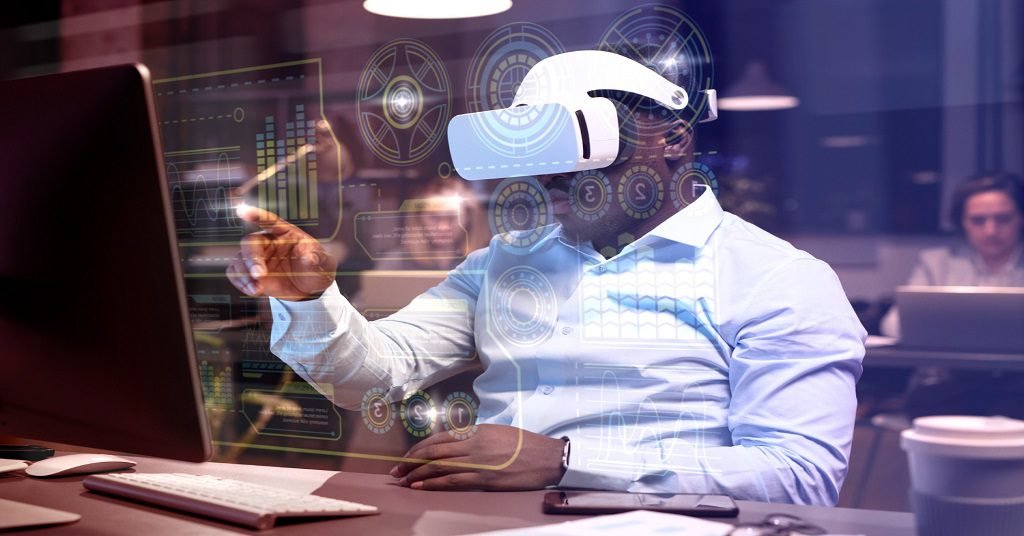The increased rise of technology has given birth to the digital twin, which is changing industries and our interaction with the physical world. A digital twin is a virtual counterpart of a physical object or system, connecting the tangible and digital worlds. This concept is gaining traction in sectors like manufacturing, healthcare, and smart cities.
What Is Digital Twin
A digital twin is a virtual model designed to accurately reflect a physical object. A digital twin is essentially a complete, up-to-date digital copy of a physical object. This could be a single part, a machine, or even a whole ecosystem or cityscape. It constantly gathers information from sensors in the real object, offering a live and precise portrayal of its actual performance.
A physical object is equipped with multiple sensors that monitor essential functional areas. These sensors gather information about various aspects of the object’s performance, such as energy output, temperature, and weather conditions. This information is then transmitted to a processing system and integrated into the digital model.
The Key Elements: Digital twins consist of several essential components that make them a potent tool for analysis, simulation, and decision-making. These elements include:
Physical Entity: The actual object, system, or surroundings that the digital twin portrays
Sensors and IoT devices: serve as the visual and auditory components of the digital twin, gathering data from the physical object and sending it to the digital copy.
The Infrastructure For Communication: enables smooth exchange of data between the physical and digital worlds.
Digital Model: An online portrayal that replicates the tangible object, capturing its shape, actions, and attributes.
Analytics And Ai:This involves algorithms and processes of artificial intelligence to analyse data from the physical entity, obtain insights, predict behaviour, and optimise performance.
The 4 Types Of Digital Twin
Component Twins/Part Twins:
Component twins are the fundamental building blocks of digital twins, representing the smallest functional unit. Part twins are similar, but relate to components of slightly lesser significance.
Asset Twins:
When multiple components collaborate, they create an asset. Asset twins enable the analysis of these interactions, generating valuable performance data that can be analysed to gain actionable insights.
System Or Unit Twins:
The next level of magnification includes system or unit twins, allowing you to observe how various assets combine to create a complete functioning system. System twins offer insight into asset interaction and can indicate potential performance improvements.
Process Twins:
Process twins, when viewed at a macro level, illustrate the collaborative functioning of systems in establishing a complete production facility. Do these systems operate in harmony to achieve maximum efficiency, or do delays in one system impact others? Process twins can ascertain the exact timing patterns that ultimately shape overall performance.
Applications In Various Industries
Digital twins are being used in various industries, leading to significant changes and improved productivity. For instance, in manufacturing, digital twins enable predictive maintenance, streamline production processes, and enhance product quality. Manufacturers can create a virtual model of a machine or assembly line to simulate different situations, detect potential problems, and take proactive steps.
Digital twins are transforming personalised medicine in healthcare. Generating digital copies of individual patients enables more precise diagnostics, customised treatment plans, and predictive disease progression modelling. This improves patient outcomes and enhances the efficiency of healthcare delivery systems.
Digital twins are significantly contributing to the development of smart cities by replicating urban infrastructure digitally. This allows city planners to study traffic flow, improve energy usage, and upgrade public services. This forward-thinking urban planning method promotes sustainability, resilience, and better living standards for residents.
Challenges
The potential advantages of digital twins are significant, but there are challenges to consider. Organisations must address issues such as safeguarding the security and privacy of collected data, ensuring compatibility between various systems, and managing the initial high costs of implementing digital twin technologies.
The benefits of digital twins surpass the challenges they present. Enhanced decision-making, improved operational efficiency, minimised downtime, and the capability to forecast and prevent issues before they arise are some of the advantages that organisations can gain from using digital twin technologies.
Conclusion
As technology advances, digital twin technology will become more integrated into our daily lives. This technology has the potential to optimise industrial processes and influence the future of urban living. The ability to create and interact with virtual replicas of the physical world opens up new possibilities for innovation and efficiency. Embracing digital twin technology represents a paradigm shift that could redefine how we perceive, interact with, and manage the world around us.


